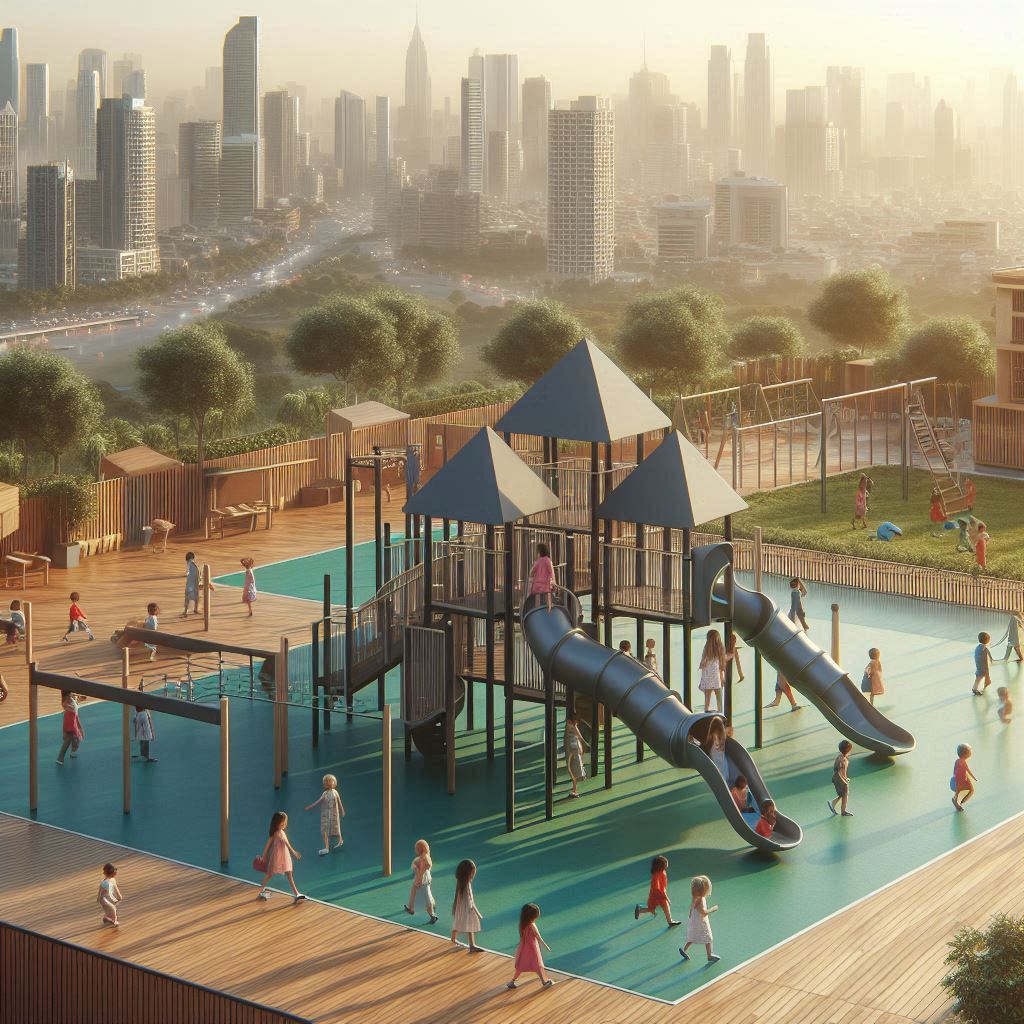Choosing the Right Playground Starts with Asking the Right Questions
Whether you’re designing a new play area for a school, setting up something fun in your own backyard, or developing a community hub, one question always comes up: indoor or outdoor?
It’s not a one-size-fits-all answer. Both types of playgrounds offer unique advantages depending on your goals, space, climate, and user age group. In this blog, we break down the pros and cons of each type to help Aussie families, educators, and planners make the most informed choice.
Outdoor Playgrounds: Built for Active Exploration
Pros:
- Bigger, bolder play: With more space to move, kids can climb, swing, slide, run, and ride.
- Natural elements: Sunlight, trees, breeze—nothing beats the benefits of outdoor play for both physical and mental wellbeing.
- Less wear and tear per square metre: Outdoor play areas can accommodate more children at once, spreading the usage load.
- Boosts vitamin D and gross motor skills: Ideal for school-aged kids who need unstructured, high-energy breaks.
Cons:
- Weather dependent: Rain, heat, or cold can limit usage, especially in parts of Victoria, Tasmania, or northern WA.
- Maintenance matters: You’ll need to keep an eye on rust, fading, and ground surfacing safety.
Perfect for: schools, councils, families with backyards, and communities wanting a durable, long-term play investment.
Indoor Playgrounds: Safe, Soft, and All-Weather
Pros:
- Weather-proof: Perfect for year-round play in any climate.
- Soft play features: Ball pits, padded climbers, sensory zones—ideal for toddlers and kindy kids.
- Controlled environment: Clean, enclosed, and often easier to supervise.
- Easy to co-locate: Often built into shopping centres, early learning centres, or commercial facilities.
Cons:
- Limited space and physical challenge: Less scope for big movement play.
- Higher maintenance frequency: Requires regular cleaning and monitoring for hygiene and safety.
Perfect for: childcare centres, preschools, shopping precincts, and indoor commercial venues.
Weather, Safety & Maintenance: What Aussie Buyers Should Know
| Feature | Outdoor Playground | Indoor Playground |
|---|---|---|
| Weather Impact | Weather-dependent | Fully climate-controlled |
| Maintenance | Rust/sun protection needed | Frequent cleaning required |
| Surface Type | Mulch, rubber, grass | Foam, mats, synthetic flooring |
| Safety Supervision | Open space, fencing important | Enclosed with CCTV/staff supervision |
If you’re in Melbourne or Hobart, indoor may be the safer year-round option. In places like Brisbane or Perth with longer dry seasons, outdoor makes perfect sense.
What’s Best for Schools?
The keyword here is balance. Many Australian schools now combine both playground types:
- Outdoor equipment like modular towers, monkey bars, and obstacle courses give students a physical outlet.
- Indoor spaces with soft play zones or sensory corners support inclusion and calm play during wet days.
For school decision-makers searching for the best playground for schools, look for inclusive design, durable materials, and compliance with Australian safety standards.
For Families: How Much Space Do You Really Have?
If you’ve got a decent-sized backyard, outdoor playground sets like timber swing sets or plastic cubbies are great for growing kids. Just ensure proper ground prep and shade.
In apartments or urban homes? You can still set up an engaging indoor play area with:
- Small climbing frames
- Slide + ball pit combos
- Foam block obstacle courses
Bonus: many of these indoor sets are portable and collapsible.
For Community Centres & Councils
Your space and demographic matter most:
- Outdoor: Works well for public parks, sporting reserves, or neighbourhood renewal projects.
- Indoor: Better suited for libraries, leisure centres, and venues hosting regular early childhood groups.
We recommend designing around your users’ needs, ages, and how many rainy days your region averages each year.
So… Which Should You Choose?
There’s no wrong answer—only the right choice for your space and purpose.
Choose outdoor playgrounds if you want:
- Long-term investment
- Bigger equipment and natural play elements
- To encourage sunlight, movement and outdoor habits
Choose indoor playgrounds if you need:
- Weather protection year-round
- Soft, safe, enclosed environments
- High appeal for toddlers and commercial locations
Think Holistically, Play Sustainably
Whether you’re building a backyard oasis, revamping a primary school play zone, or designing a new council park, your playground should match your goals, users and budget. And don’t forget the importance of outdoor play for development of your Child read this post to know how play ground equipment can develop skills in a child by regular activities.
Atplayground-equipment.com.au, we help Australian customers choose the right playground gear—from weather-ready outdoor combos to soft indoor sensory modules.
Let’s build something that lasts, excites, and gets kids off screens and into movement.


